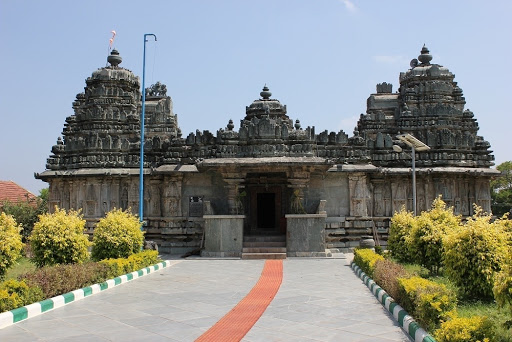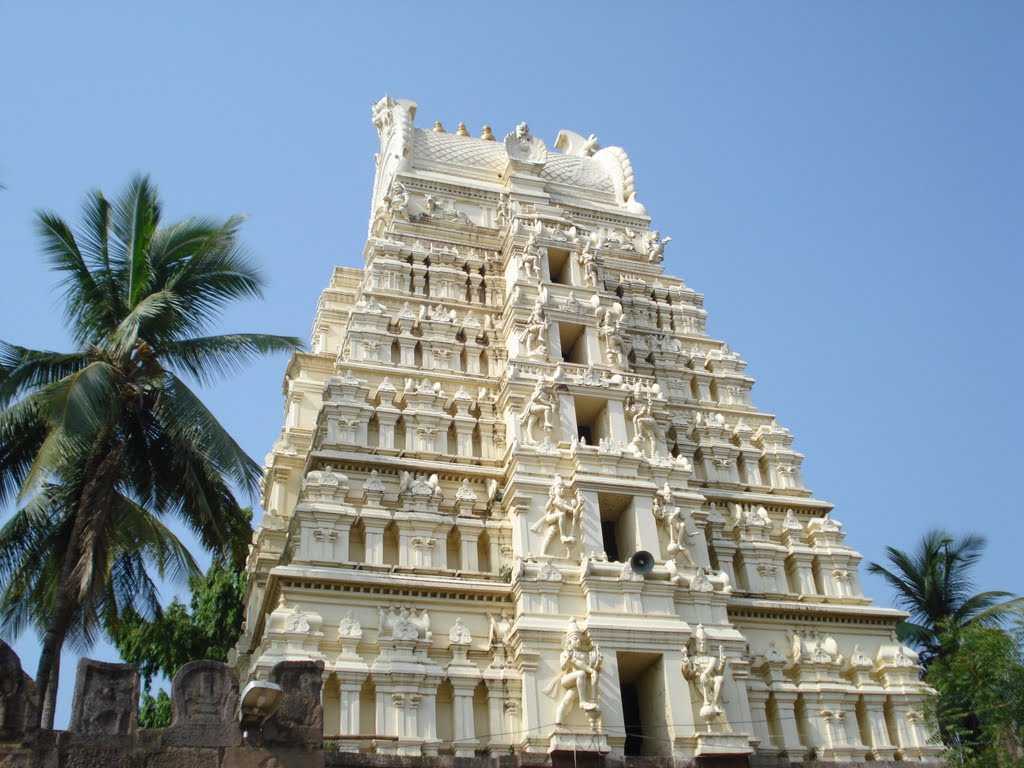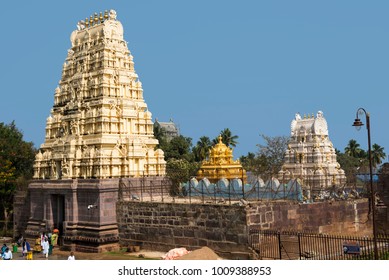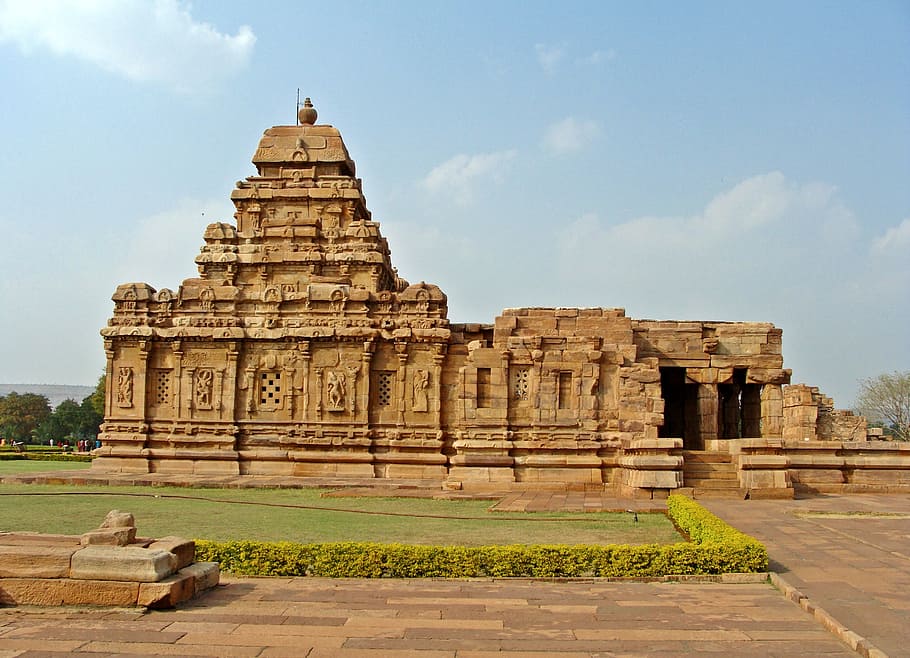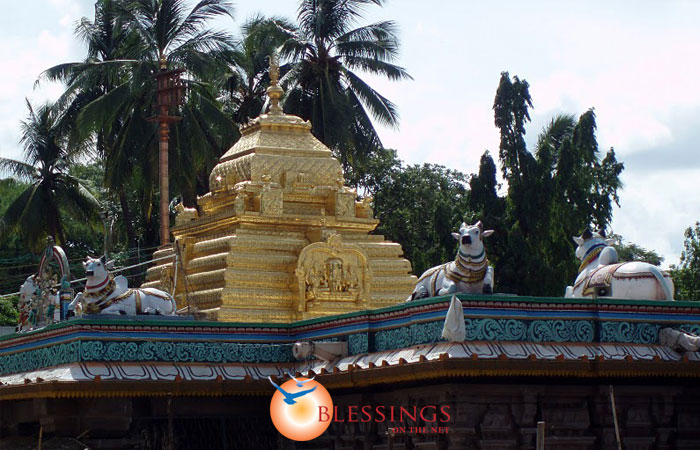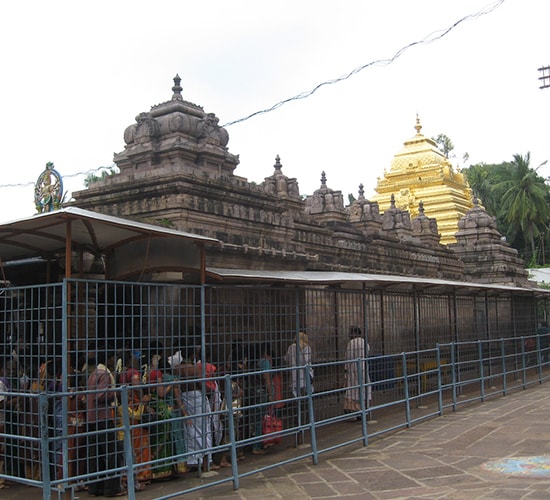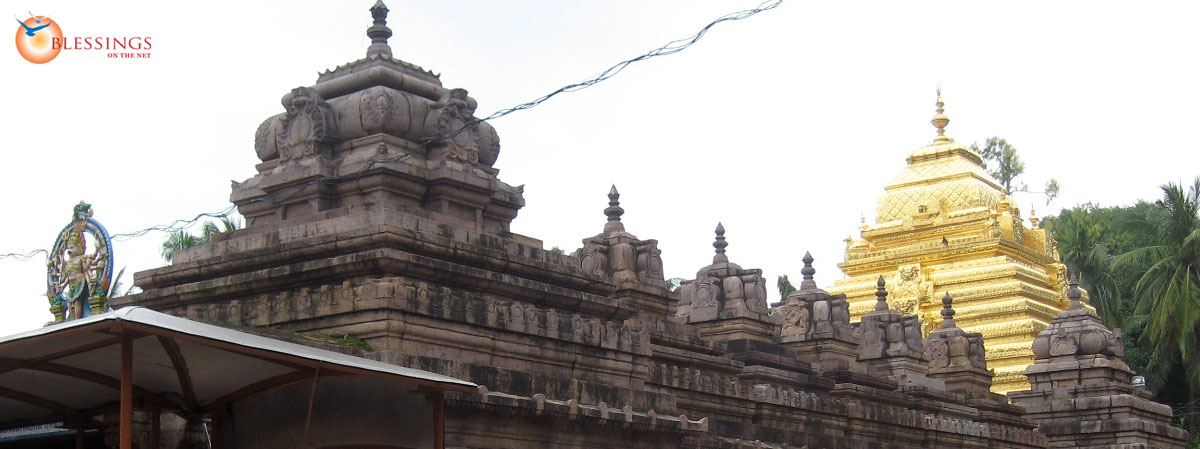ॐ श्री गुरुभ्यो नमः ॐ श्री शिवानन्दाय नमः ॐ श्री चिदानन्दाय नमः ॐ श्री दुर्गायै नमः
Source of all Images in this Blog-post : Google Images : ‘Google Image Search’ will reveal the multiple sources of every single image shared in this Blog. For more details, kindly see ‘Disclaimer‘
Srisailam Mallikarjuna Swamy Temple News
Lord Shiva & His Worship : A Beautiful eBook on Lord Shiva By Swami Sivananda Saraswathi
Other Jyotirlinga Temples of the Sacred Soil of India
Sri Bhramaramba Mallikarjuna Temple or Srisailam Temple is a Hindu temple dedicated to the deities Shiva and Parvati, located at Srisailam in the Indian state of Andhra Pradesh.
Srisaila Mahakshetram is considered to be equal to holy Kailasa on Earth. The history and tradition have it, that the merits earned by visiting Srisailam are equal to worshipping all the divine powers of the universe.
Srisaila Mahakshetram is the living embodiment of ancient and spiritual-cultural traditions and values of India.
Visited by many great saints like Shri Adi Shankaracharya, rulers like Sri Krishna Devaraya, Chatrapathi Sivaji and several other spiritual personalities, Srisailam is the supreme repository of spiritualilty.
Srisailam Temple : Sevas & Darshanam
Temple entrance :
The temple is significant to the Hindu sects of both Shaivam and Shaktam as this temple is referred to as one of the twelve Jyothirlingas of Lord Shiva, and as one of the eighteen Shakti Peethas of goddess Parvati.
Lord Shiva is worshiped here as Shri Mallikarjuna, and is represented by the sacred Lingam. His consort Parvati is depicted here as Goddess Bhramaramba.
The temple is one of the only three temples in India where both Jyotirlinga and Shaktipeetha are revered.
A YouTube Video : Srishailam & its Major Tourist Attractions
Legend :
According to the legend, Kumara Kartikeya – the younger son of Lord Shiva – once got angry and came to the Kronch Hills from Shri Kailasha.
Lord Shiva and Mother Parvati came here and stayed on with the name Arjuna and Mallika. Thus, the place and the temple got the name of Mallikarjuna Swamy temple.
The place where Shiva and Parvati stayed came to be known as Shrishailam.
As per Hindu legend, the presiding deity in the form of Linga (an iconic form of Shiva) was worshipped here with jasmine flowers locally known as Mallika, leading to the name of Mallikarjuna for the presiding deity.
Mahashivratri is the main festival and a grand festival celebrated at Srisailam Mallikarjuna Swamy temple.
History :
There are inscriptional evidence from the Satavahana dynasty about the temple being existent from the 2nd century.
Most modern additions to the temple were done during the time of king Harihara I of Vijayanagara Empire.
The Veerasheromandapam and Paathalaganga steps were constructed during the time of Reddi Kingdom.
Architecture :
The temple complex covers an area of 2 hectares and houses four gateway towers known as Gopurams. The temple has numerous shrines, with those of Mallikarjuna and His consort Bhramaramba being the most prominent ones.
The temple complex houses many halls; the most notable one is the Mukha Mandapa built during the Vijayanagara period.
The temple is situated facing East. The central Mandapam has several pillars, with a huge idol of Nandikeshwara. The temple is enclosed by tall walls. There are a number of sculptures too in the temple.
The hall leading to the Sanctum Sanctorum, has intricately sculpted pillars. The shrine where Shri Mallikarjuna is housed, is the oldest one in the temple, dating back to the 7th century.
There is a Sahasra Linga (1000 Lingams), believed to have been commissioned by Rama of Ramayana, and five other Lingams believed to have been commissioned by the Pandavas of Mahabharata. A mirror hall in the first entrance has images of Lord Nataraja – Hindu God Shiva.
Religious Significance :
Lord Shiva in this temple is referred to as one of the twelve Jyotirlingas of India. Goddess Bramarambha’s shrine is referred to as one of the fifty-two Shakti Peethas of India. This temple is classified as one of the Paadal Petra Sthalams
On the way to the main temple is located Shikreshwar temple. It is said that after a Darshan in this temple one does not get rebirth.
Krishna River here is called Patala Ganga. One has to go down 852 stairs to reach the river. The Shiva Linga is bathed with the water of this river.
JyotirLinga :
As per Siva Mahapuranam, once Brahma (the Hindu God of creation) and Vishnu (the Hindu God of preservation) had an argument in terms of supremacy of creation.
To test them, Shiva pierced the three worlds as a huge endless pillar of light, the Jyotirlinga. Vishnu and Brahma split their ways to downwards and upwards respectively to find the end of the light in either directions.
Brahma lied that he found out the end, while Vishnu conceded his defeat. Shiva appeared as a second pillar of light and cursed Brahma that he would have no place in ceremonies while Vishnu would be worshipped till the end of eternity.
The Jyotirlinga is the supreme partless reality, out of which Shiva partly appears. The Jyotirlinga shrines, thus are places where Shiva appeared as a fiery column of light.
Originally there was this belief that there are 64 Jyotirlingas while 12 of them are considered to be extremely auspicious and holy. Each of the twelve Jyotirlinga sites take the name of the presiding deity – each considered a different manifestation of Hindu God Shiva.
At all these sites, the primary image is Lingam representing the beginningless and endless Stambha (pillar), symbolizing the infinite nature of Shiva.
The twelve Jyotirlinga are Somnath in Gujarat, Mallikarjuna at Srisailam in Andhra Pradesh, Mahakaleswar at Ujjain in Madhya Pradesh, Omkareshwar in Madhya Pradesh, Kedarnath in the Himalayas, Bhimashankar in Maharashtra, Viswanath at Varanasi in Uttar Pradesh, Triambakeshwar in Maharashtra, Vaidyanath at Deoghar district in Jharkhand, Nageswar at Dwarka in Gujarat, Rameshwar at Rameswaram in Tamil Nadu and Grishneshwar at Aurangabad in Maharashtra.
A YouTube Video : A Pilgrimage to 12 Dwadasha Jyotirlinga Temples of India
Read more about Srisailam Mallikarjuna Temple in Wikipedia
Other Jyotirlinga Temples of the Sacred Soil of India
Devi Bhramaramba Temple in Srishailam :
Durga Navaratri celebrations at Sri Bramaramba Temple in Srishailam
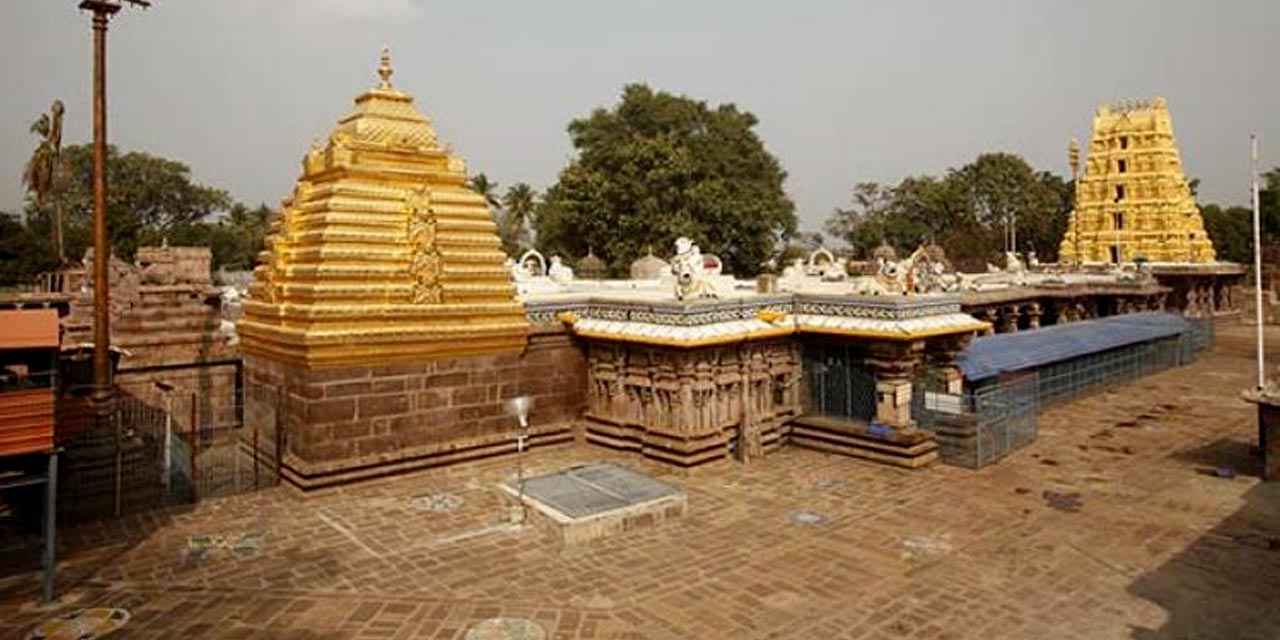
Srishailam is the most sacred place in South India where one of the most powerful Dwadasa Jyothirlingams (12 prominent Shiva temples) and one of the most powerful Ashtadasha Shakti Peethas (18 prominent temples of Goddess Shakti) both are at the same site.

Durga Navaratri or Dasara Utsavam is one of the biggest events in Bhramaramba Mallikarjuna Swamy temple located at Srisailam in Kurnool district of Andhra Pradesh.
Durga Navratri celebrations starts soon after Mahalaya Amavasya and ends with Shami Puja on Vijaya Dashami on the 10th day.
During the celebrations, special Pujas and Archanas are offered to Lord Mallikarjuna Swamy. Bhramarambika Devi, His consort, is worshipped in Her 9 forms of Navadurga.
Vahana Sevas to Goddess Bhramaramba and to Lord Mallikarjuna are the most eye-catching events in Srisailam.
Dasara Navratri begins with the Ganapati Pooja followed by the Kalasha Sthapana and ends with Poornahuthi. Special Pujas, Archanas are performed on these days along with Navaratri special Pujas like – Kumari Puja, Suhasini Puja and Dampati Puja.
First day of Navaratri – Shailaputri Alankaram – Brungi Vahanam seva
Second – Brahmacharini Alankaram – Mayura Vahanam seva
Third day – Chandraghanta Alankaram – Ravana vahana seva
Fourth day – Kushmanda Alankaram – Kailasa Vahana seva
Fifth day – Skandamata Alankaram – Sesha vahana seva
Sixth day – Katyayani Alankaram – Hamsa vahana seva
Seventh day – Kalaratri Alankaram – Gajavahana seva
Eigth day – Mahadurga Alankaram – Nandi vahana seva
Ninth day – Siddidayini Alankaram – Ashwa vahana seva
10th day Day of Dasara – Bhramaramba devi Alankaram – Nandi vahanam seva
Navratri celebrations begins with several special Pujas like Yagashala Pravesham, Ganapati Puja, Swasthi Punyahavachanam, Deeksha Sankalpam, Kankana Puja, Rudrayaga Sankalpam, Deekshadharana, Kankana Dharana, Mandaparadhana and Kalasha Sthapana Puja.
Then Chandiyaganga Akhanda Sthapana, Vaasthu Puja & Vaasthu Homam.
In the evening Parayanam and Japanushtana are performed. At 5’o clock on the same day, Ankurarapana, Agni Prathishta, Navavaranarchana, Kumkumarchana, Rudrahomam & Chandi homam. At 9 pm Suhasini Puja, Kalaratri Puja, Maha Mangala Aarati, Neerajana Mantra Pushpam and Teertha Prasada Vitharana are performed.
On Vijaya Dashami day, Shami Puja is performed in the evening and then after that Navaratri celebrations come to an end.
